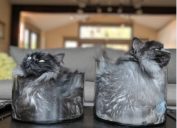14 Surprising Ways Your Cat Shows Affection
These feline behaviors are how your cat tells you they love you.

The biggest argument for self-proclaimed "cat haters" is that unlike their canine counterparts, cats are more standoffish and less likely to love their owners. But the truth is, cats do love their owners—they just have different ways of showing it. So, how do cats show affection? They might not excitedly run up to you when you open the front door like a dog would, but they could venture up to you and rub their tail on you instead. And when they bring you a dead mouse? That's just their way of saying, "I love you." If you learn to recognize all the surprising ways they show affection, you'll come to realize that your cat does love you after all.
1
They slowly blink at you.

Don't be alarmed if your feline friend is intently staring at you. While it may seem like a threatening move, this is actually their way of showing you that they love you. As certified cat behaviorist Russell Hartstein, CEO of Fun Paw Care, explains, if your cat is staring at you and slowly blinking, they're trying to communicate with you by showing affection. And you can even slowly blink back at your cat to offer your own love, showing your cat that they are "loved and safe around you."
2
They back it up in your face.
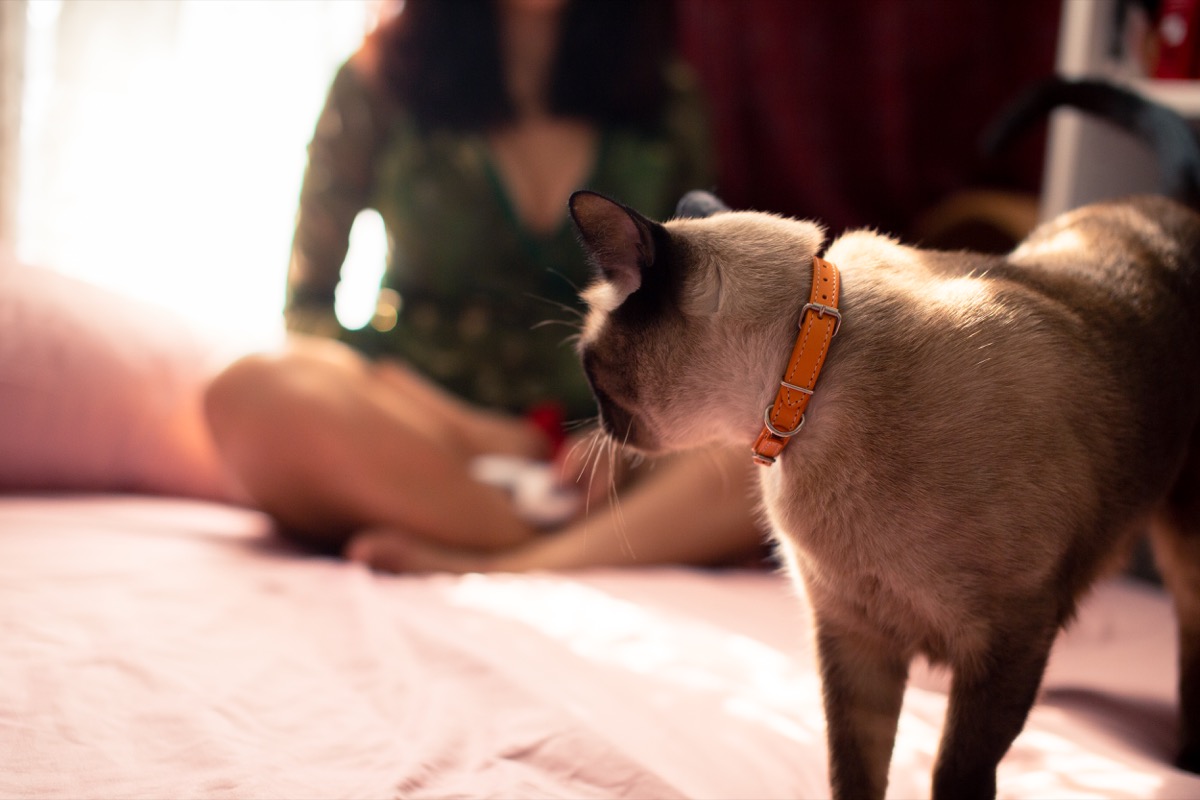
You may not be too appreciative when you see the rear end of your cat, but this is another chance for them to show you their love. Nikki Naser, resident pet expert at Chewy, explains that if your cat regularly shows you their behind, that means they are comfortable around you and trying to tell you that you are their "favorite human."
3
Their tail is curved when you're near.

You can tell a lot from a cat's tail, and how it's shaped when they're around you. What shape is good? Curved. As Kelly C. Ballantyne, DVM, explained to Catster, when a cat is approaching you with a "tail straight up with a slight curve at the end," they're signaling to you that they are approaching amicably—which is a posture they're often seen displaying among other feline friends or humans they're fond of.
4
Or they wrap their tail around you.
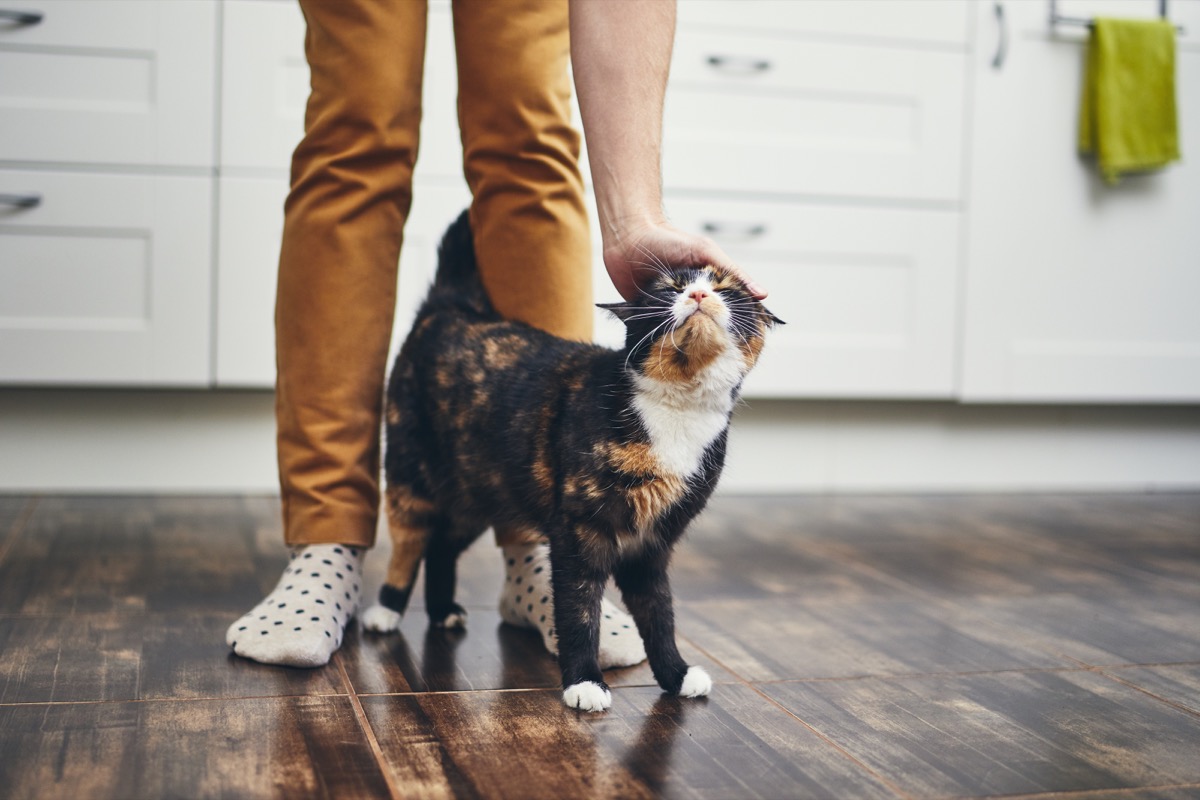
If you've ever found yourself wrapped up in the tail of your feline friend, don't take that moment to be annoyed. Instead, be appreciative—they're showing you love! Boriana Slabakova, co-founder of PetPedia, says this is the cat equivalent to "humans holding hands." If your cat feels comfortable enough to wrap their tail around you, it's a sign of "true friendship, love, and trust."
5
They nibble on you.
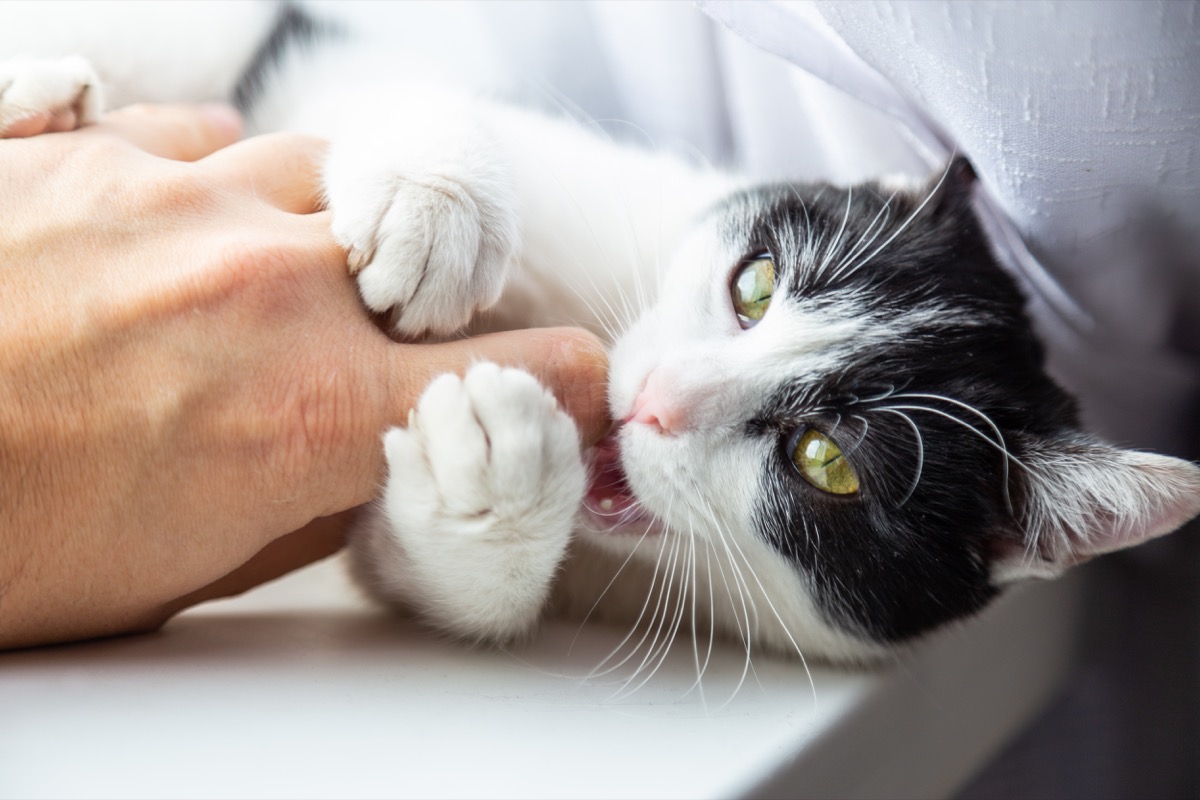
While you may think that your cat biting you means they don't like you, it's often a sign of the opposite. When a cat truly cares for someone, they might show this through gentle "love bites," explains Lynn Maria Thompson, author of The Feline CEO. They normally do this with your hand when you're petting them, as an indication that they don't want you to take your hand away.
6
They pee on things when you leave.
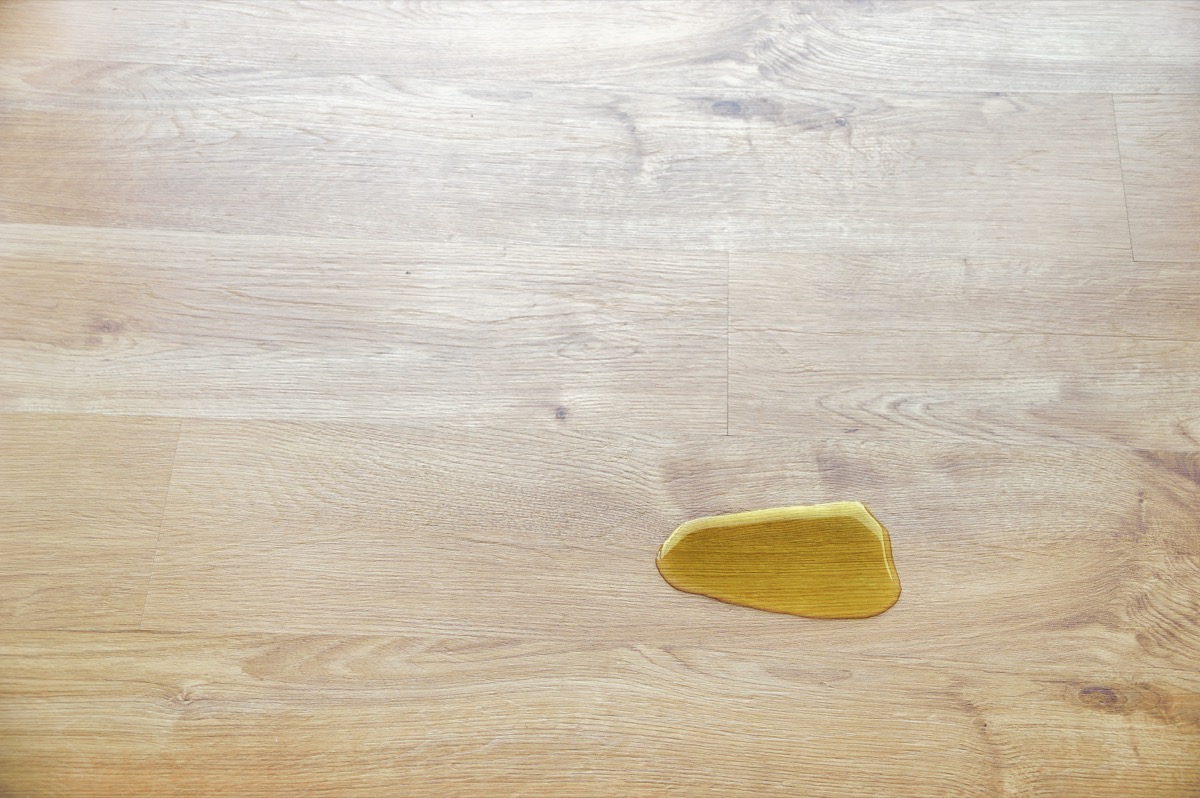
We understand, returning home to random puddles of cat pee doesn't necessarily sound like a good time. But in the grand scheme of things, your cat was just trying to show you that they consider you a member of their family. As Thompson explains, cats will "mark the boundaries of their territory" by peeing there. So, the scent of their urine—or the urine of someone in their family—is a sign of home. When you leave them alone, they pee on things in the hope that "the scent of the family pee" will bring you back home to them.
7
They knead you.
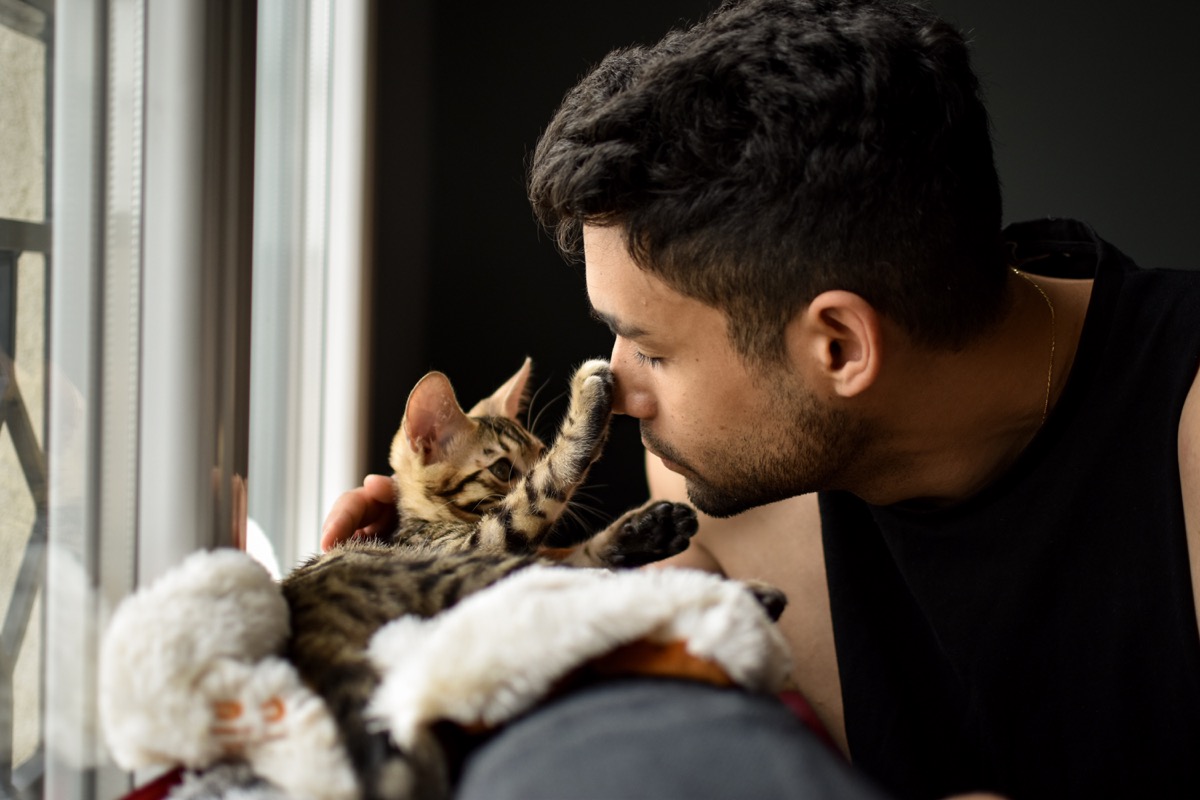
Cats knead you to show you that they need you. The act of kneading is where cats push forward with their front paws, alternating between left and right. And while this sounds painful, Naser says to not worry, cats do it gently to the owners they love. It's an act they start doing as kittens when nursing, so it's a motion that reminds them of a "time when they felt content."
8
They bring you dead animals.
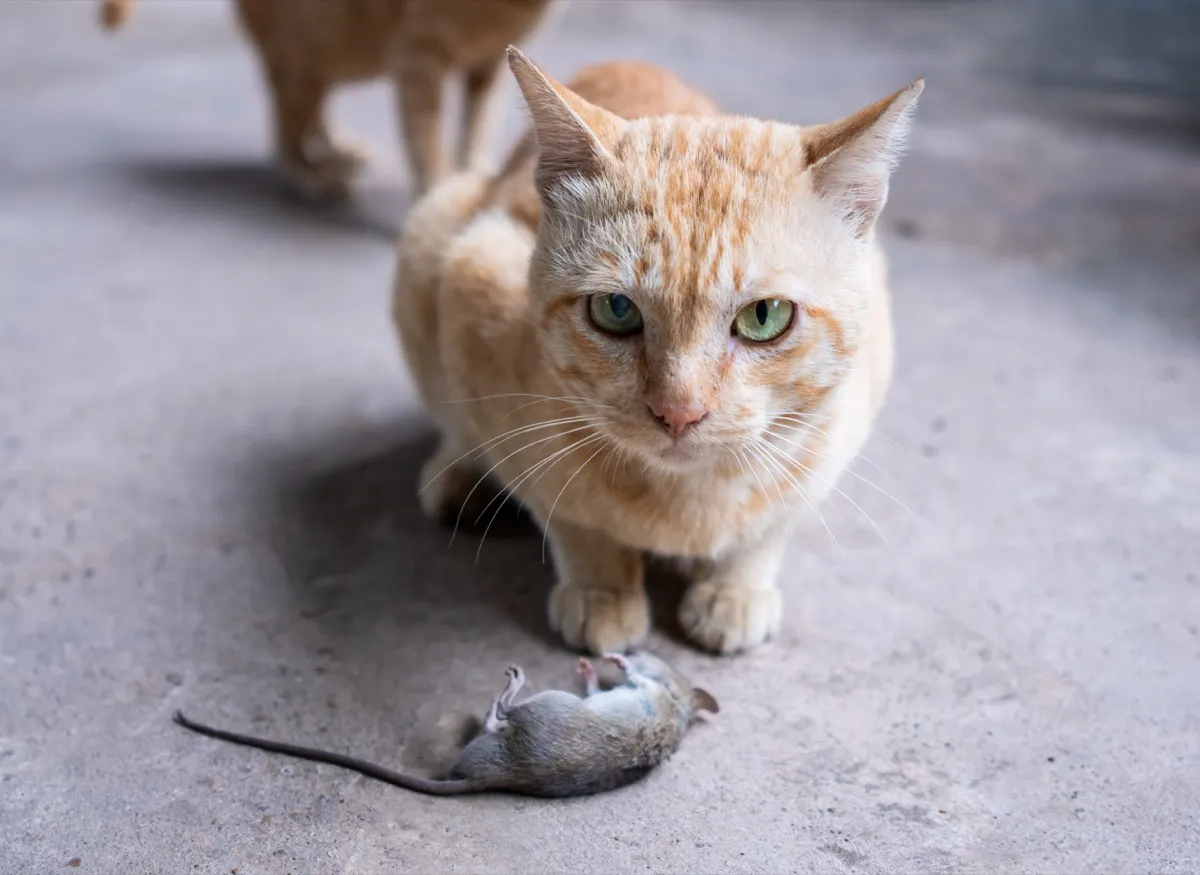
What's the cat equivalent of bringing you a bouquet of roses? Gifting you their prey, says Emily Parker, content manager at Catological. This is because in the wild, food is a "precious commodity," and most of a cat's time is spent hunting. When it comes to sharing their bounty, they do so only with those closest to them. It's a sign of them caring for you, almost as if they were saying, "Don't worry about dinner tonight, I've got it covered."
9
They always seem to be nearby, especially when you're sick.

Have you ever noticed your cat seems to be especially close to you when you're feeling under the weather? That's probably a good sign that you're someone they love. "Cats like to be near the people they care about," Thompson says. "They can especially sense if you're unwell or feeling blue, and will stay close to you to comfort you during those times."
10
They head bunt against you.
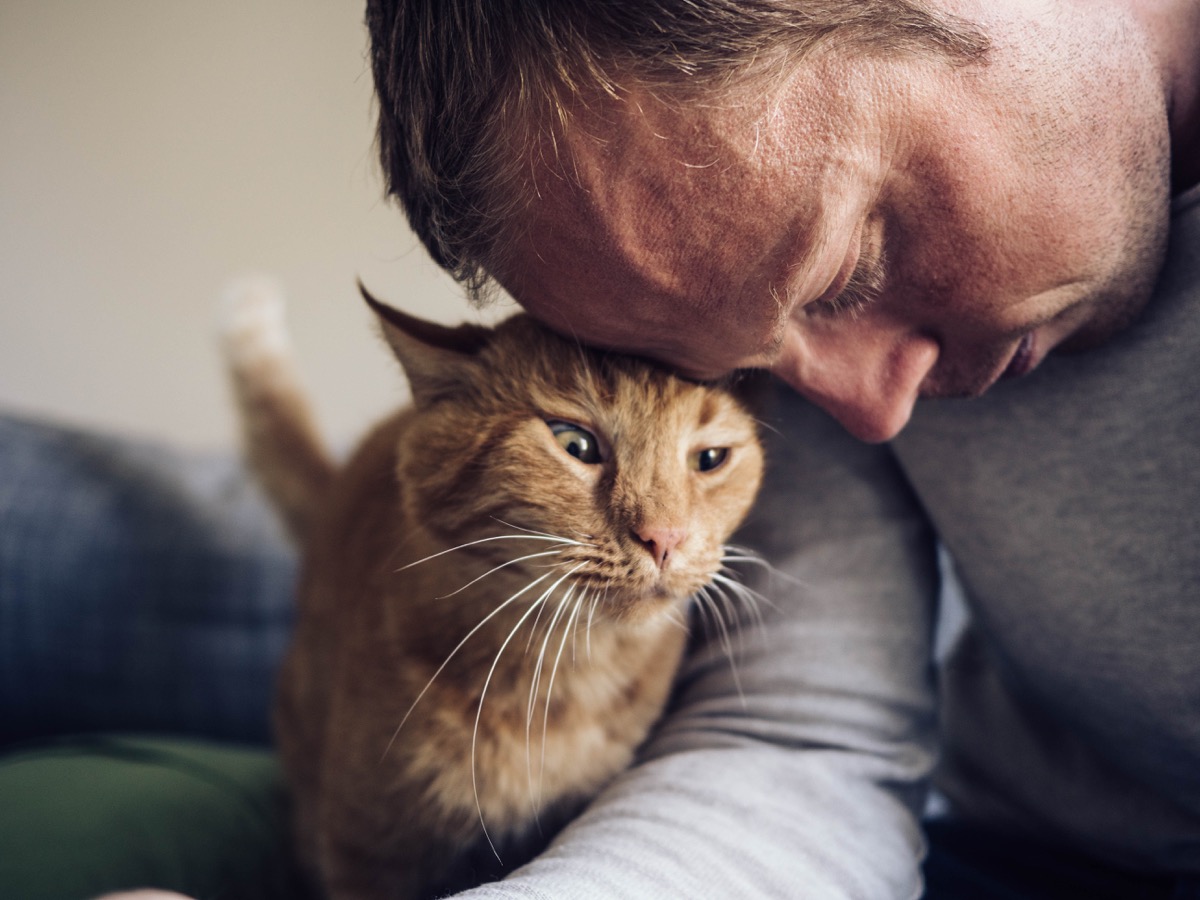
A head bunt from a cat is the ultimate sign of affection, according to Parker. When they bump or rub their head against you, they're saying "I love you" and attempting show you affection by their closeness to you. Not only that, but they're also making sure the rest of the world knows too. By rubbing their head on you, they're marking you with their scent, and telling the rest of the cat world that you are their "human."
11
They caress you with their paws.

A cat's motive is often tied to an attempt to mark their scent. When cats rub their cheeks on you, it's because they have scent glands in their cheeks and they are trying to emit their pheromones on you. Another place cats have these scent glands? Their paws. According to Thompson, when they caress you with their paws, that's another chance for them to get their scent on you.
12
They purr or meow near you.
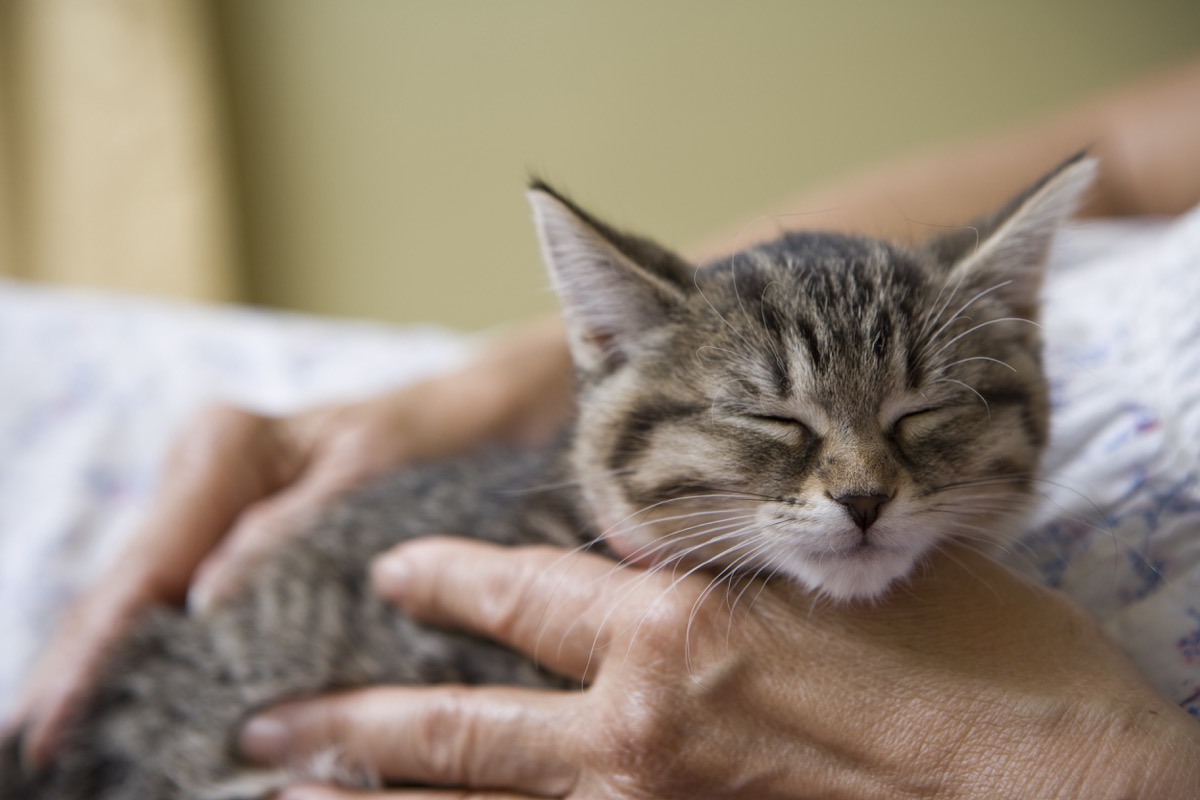
It's hard to tell what your cat is trying to say when they purr or meow in your vicinity. Are they hungry? Do they want to be left alone? Maybe. But have you ever considered that they might be trying to tell you that they love you? As Thompson explains, a cat's purr has "healing properties." So when they purr, it most likely indicates that they're happy—and especially happy being near you.
13
They show you their belly.
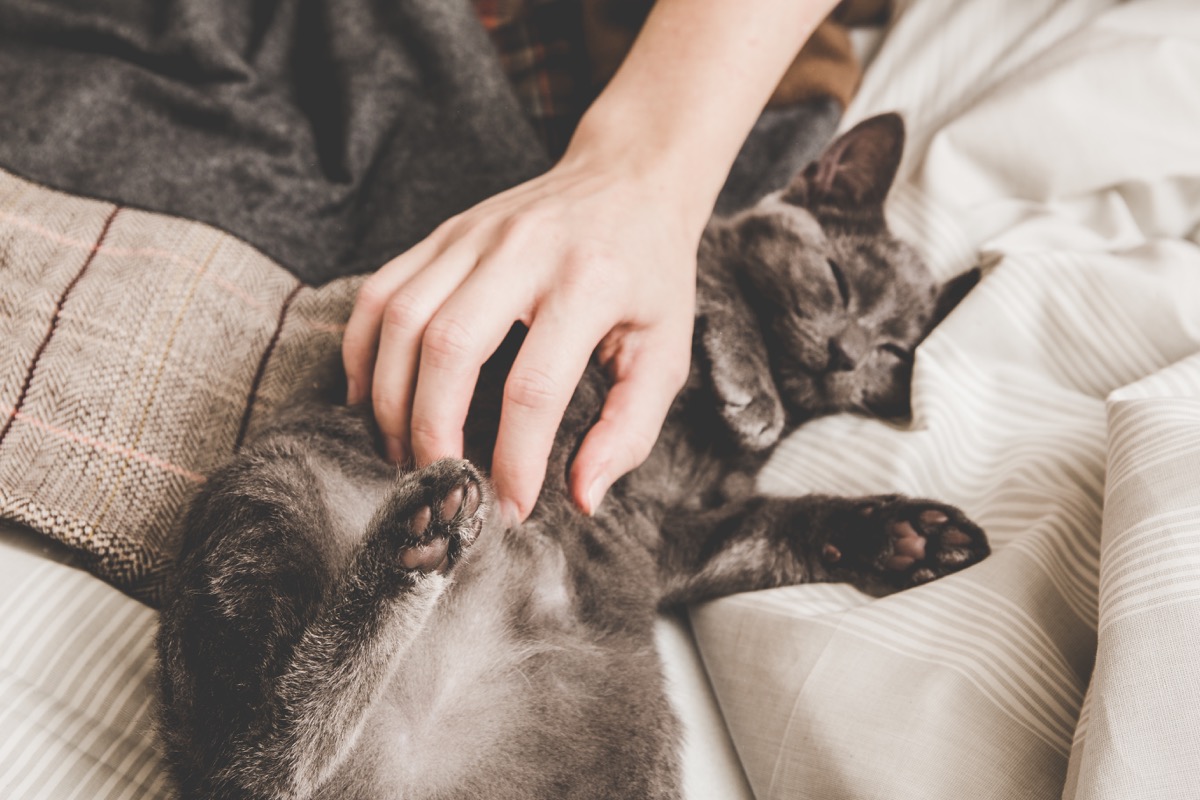
Cats will only expose their bellies to someone they trust, Naser explains. But don't necessarily go in for a pet, because usually it's only for looks—and you run the risk of being clawed. If your cat really loves you, however, Naser says they might let you rub their belly.
14
They lick you.
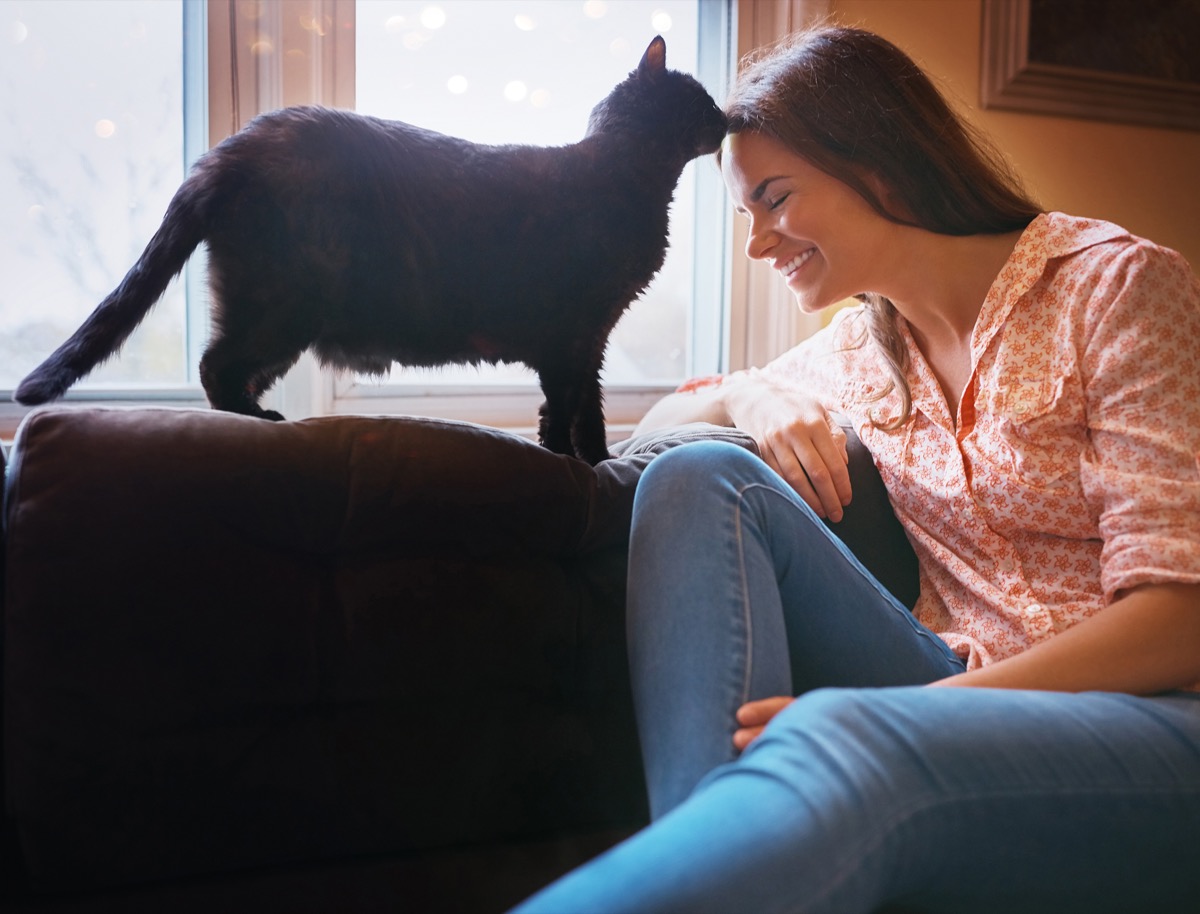
Cats hold a lot of power in their tongues. As certified applied animal behaviorist Megan Maxwell explained to PetMD, a cat's lick can indicate a multitude of things. Cats may lick their owners to let them know they want their attention, perhaps to play or be pet. But they could also be trying to clean you, which is a behavior they do to bond. On top of all that, licking is often "a sign that a cat is calm" around you, meaning they love you.
Additional reporting by Emerald Catron.

